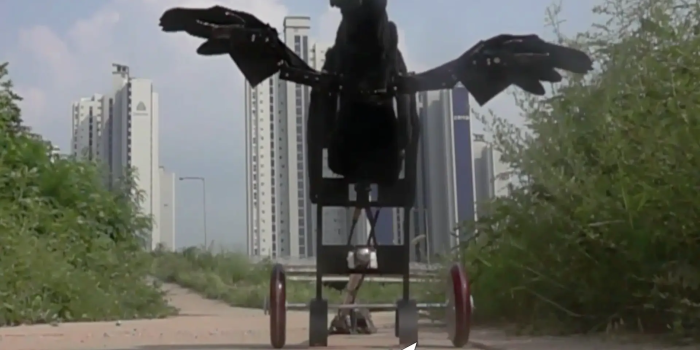The perplexing question of why certain dinosaurs sported feathers and proto-wings long before gaining the ability to fly may have found an answer, thanks to a recent experiment involving a robotic dinosaur. Scientists have often wondered about the purpose of these early feathered adaptations, and a team from Seoul National University decided to investigate whether they were used for hunting.
Feathers were a common feature among various dinosaur species, such as the iconic velociraptor, but the majority possessed primitive forms that only allowed for short hops or glides. The mystery deepened as these feathers appeared in the fossil record long before dinosaurs developed strong enough wings for flight. Researchers proposed a hypothesis suggesting that these feathered dinosaurs might have utilized them for hunting, akin to the hunting behavior observed in some modern birds like the roadrunner.

Contrary to popular belief about roadrunners, the study highlights that they engage in a behavior called “flush-pursuit foraging,” using their small wings and tail feathers to spook insects out of hiding before catching them. To test this theory, the scientists constructed a robot named Robopteryx, modeled after a peacock-sized dinosaur called Caudipteryx. The robot was programmed to perform various flush-pursuit behaviors, including spreading its proto-wings and raising its tail.
In the wild, the researchers tested whether these behaviors would effectively startle insects, using grasshoppers as prey since they are known to flee in response to flushing behavior in birds and coexisted with Caudipteryx. The experiments yielded intriguing results, showing that 93% of grasshoppers fled when the proto-wings were flapped, compared to only 47% without the wings. The grasshoppers appeared to flee more frequently when the robot had feathers on its tail or white patches on its wings.
These findings suggest that some dinosaurs might have evolved feathers and proto-wings as a means to enhance their hunting success. Over time, these adaptations could have evolved into larger and more elaborate displays, eventually leading to the development of the power of flight. A previous study using a robotic Caudipteryx had shown that proto-wings flapped while the dinosaur ran, supporting the idea that these features served a dual purpose in both hunting and eventual flight.
In essence, the results, published in the journal Scientific Reports sheds light on the previously mysterious purpose of dinosaur feathers, providing valuable insights into the early evolutionary advantages that paved the way for the development of flight in these ancient creatures.


